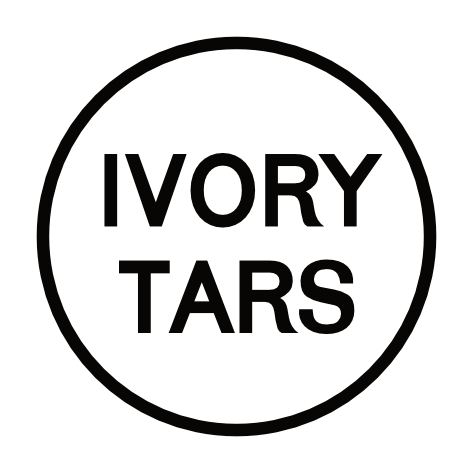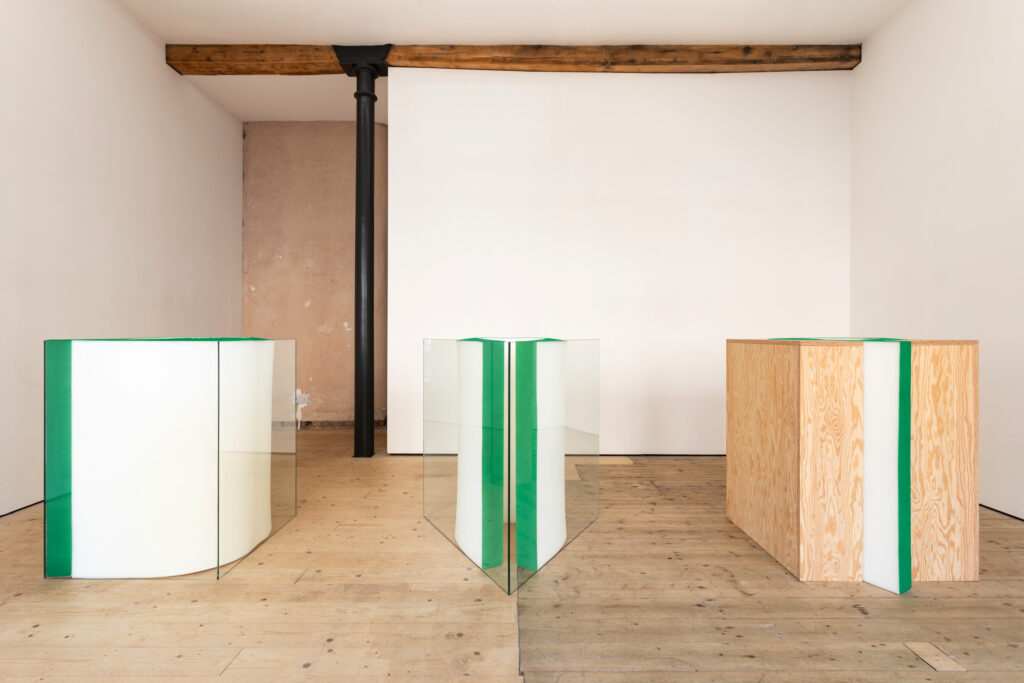

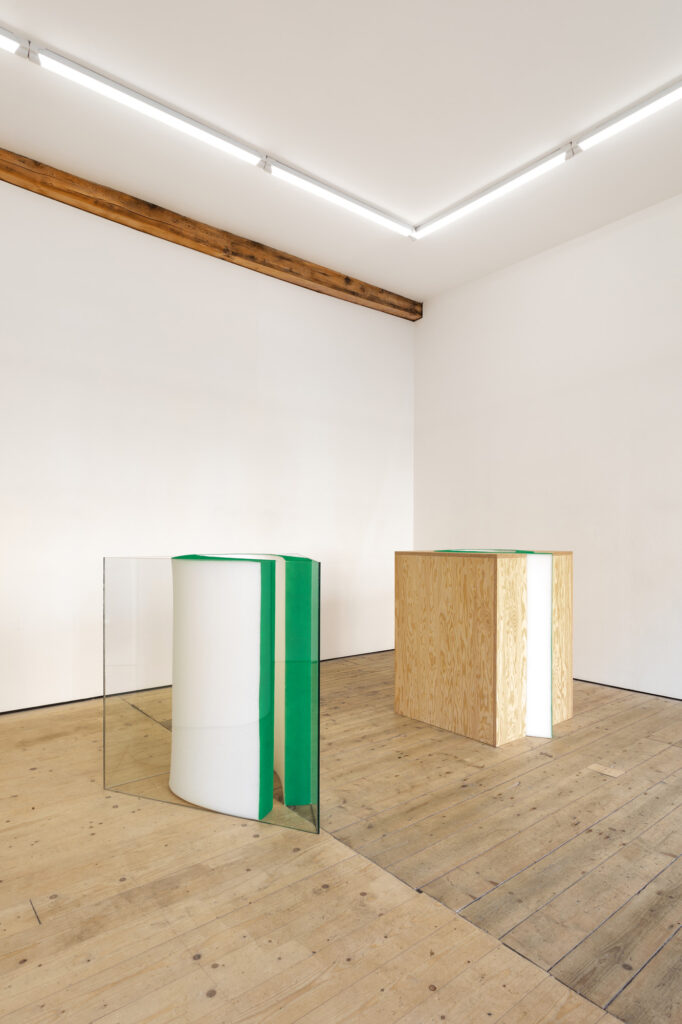
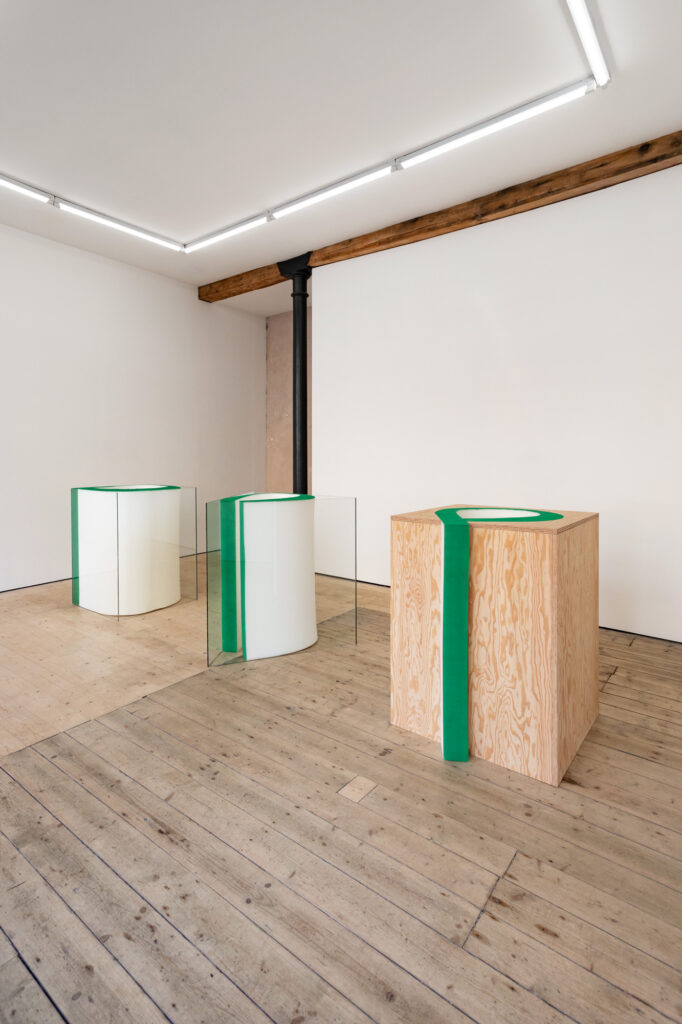

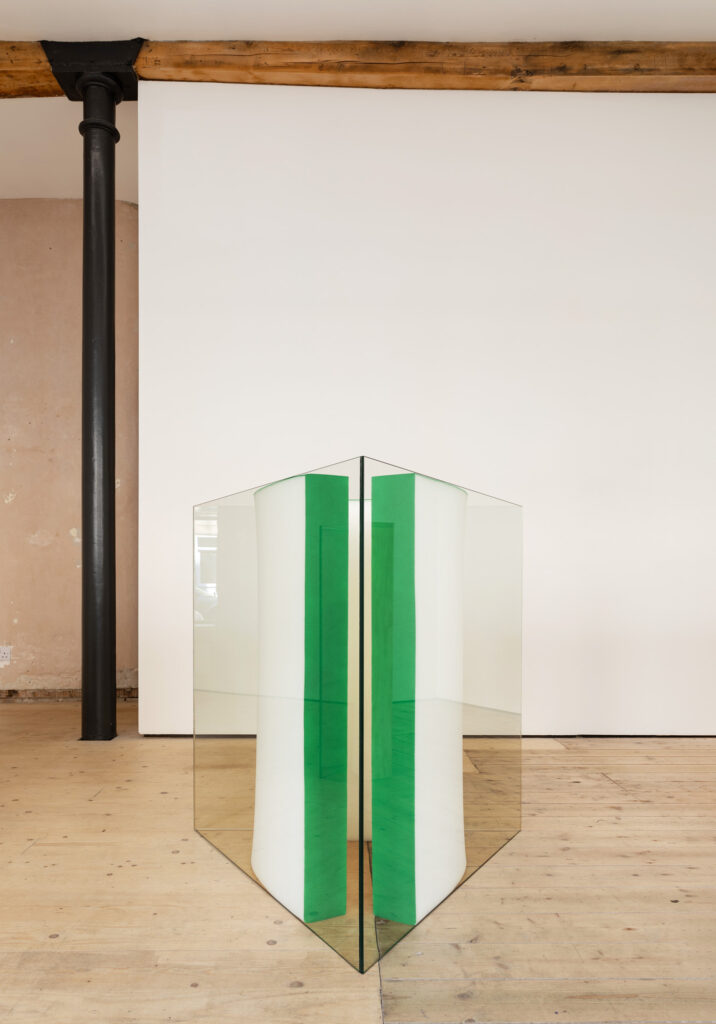
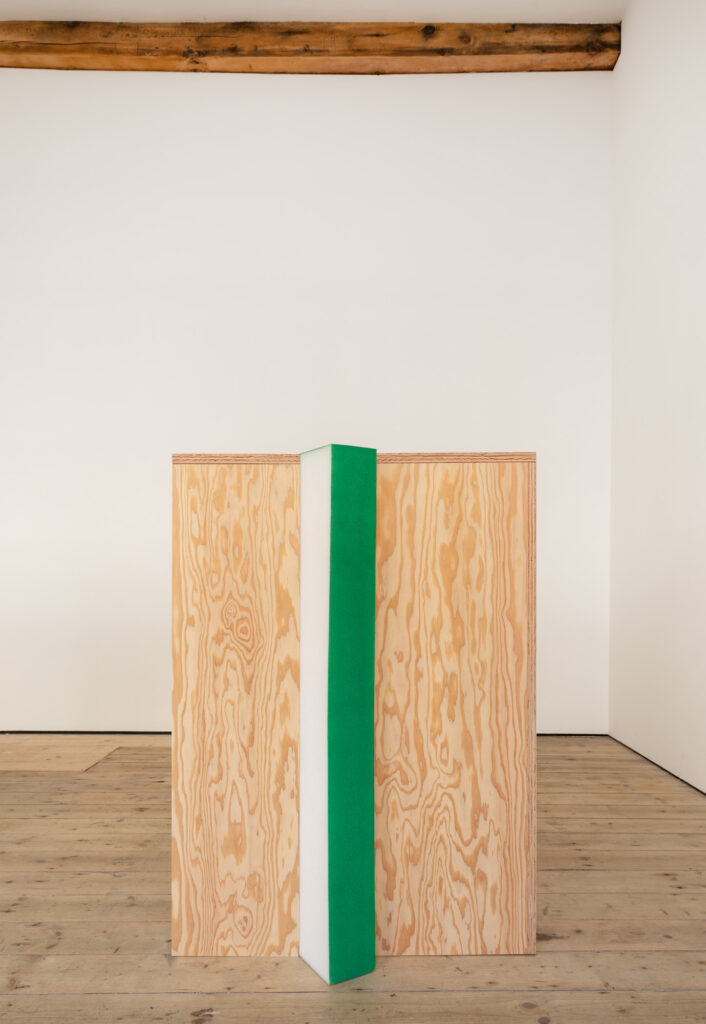
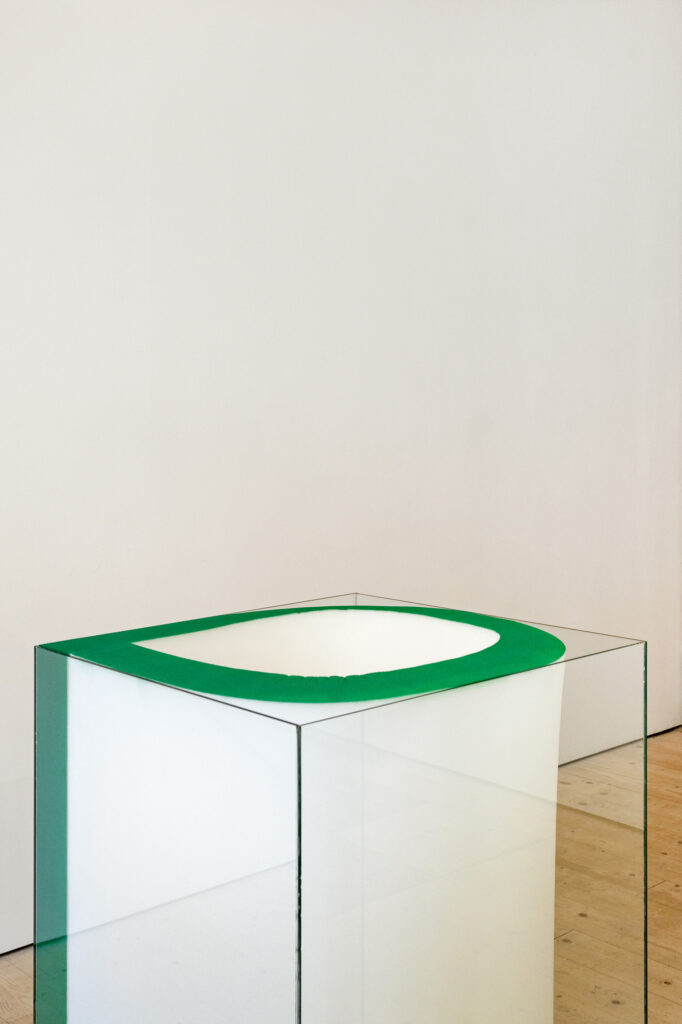
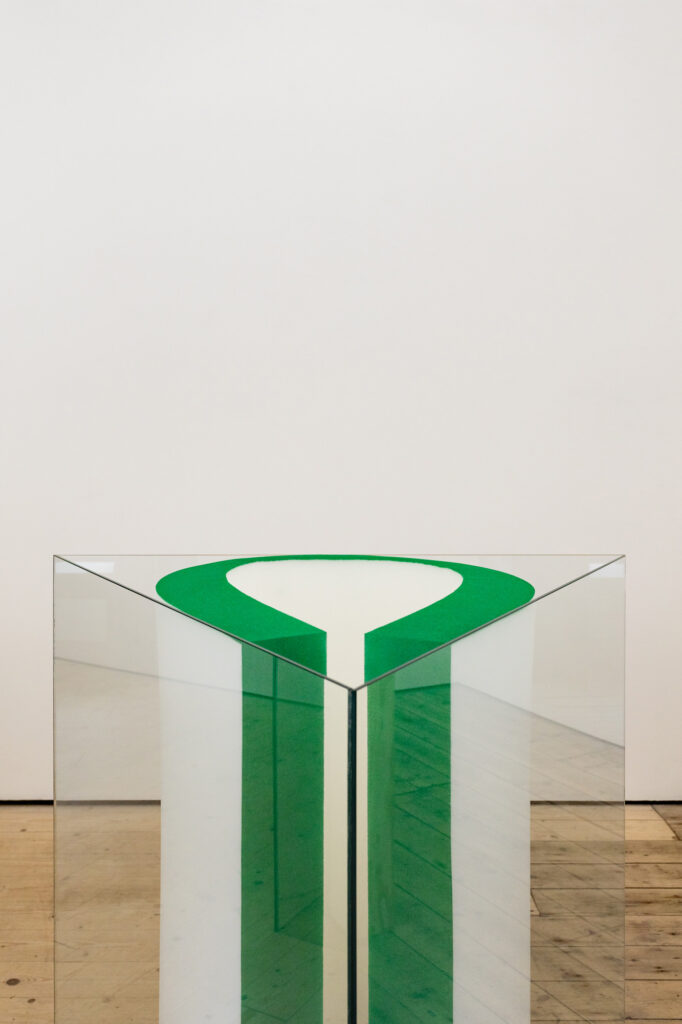
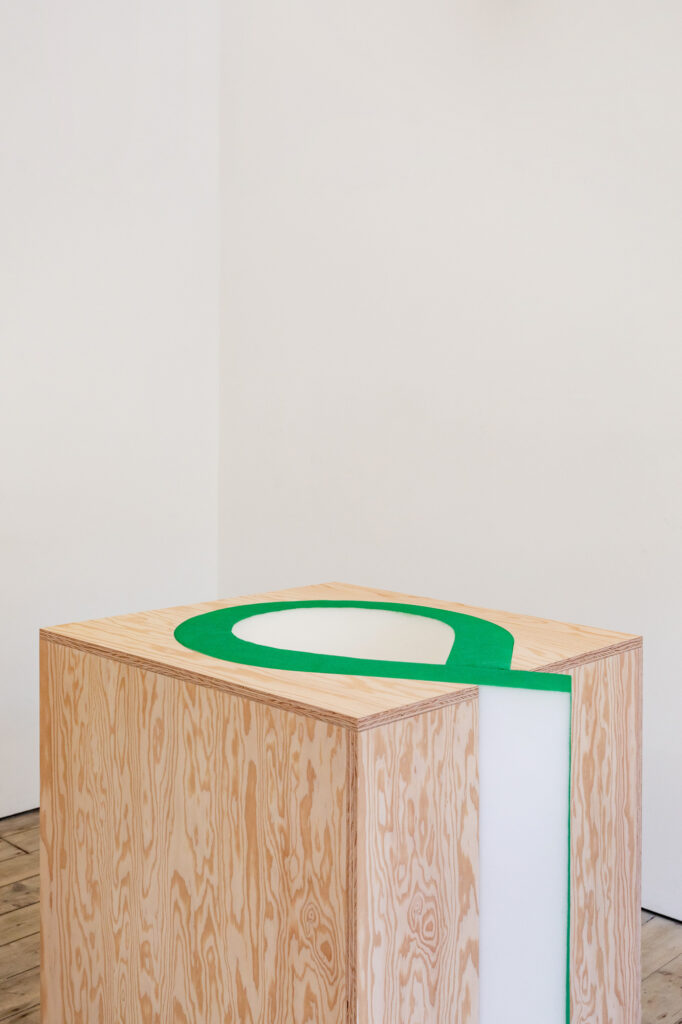
Curlicue I II III
Tim Scott
17th September – 22nd October 2023
Ivory Tars is pleased to announce Curlicue I II III, an exhibition by Tim Scott (b.1937 Richmond, Surrey, lives and works in Kandy, Sri Lanka and Troutsdale, N. Yorkshire). This presentation comprises of refabricated versions of a trio of sculptures that Scott produced in 1963, which make innovative use of malleable foam sheeting. It is the first occasion these works have been publicly displayed as a group. They have been remade using archival records and in close consultation with the artist.
In the 1960s Scott became associated with what would become widely known, albeit to the ambivalence of its principal exponents, as ‘New Generation sculpture’. Named after a 1965 exhibition surveying an emerging tendency involving synthetic, brightly-hued surfaces and the abandonment of plinths or pedestals as a mode of display, New Generation sculpture frequently made use of materials that lay beyond a traditional lexicon. Scott’s own works of the period were constructed from amongst other things, glass, acrylic plastic, fibreglass-reinforced resin, welded aluminium and latex foam.
The Curlicue series mark a transitional moment in Scott’s practice. Unlike his output of preceding years, during a time when he was employed full-time as an architectural draughtsman, these sculptures were produced without the aid of preparatory maquettes. Constructed in Scott’s newly established Peckham studio –anecdotally, in the immediate wake of a visit from the American art critic Clement Greenberg– they continue themes present in previous works, while anticipating a number of concerns central to large-scale sculptures he would produce in the second half of the decade. Scott had first deployed glass partitions as a method to enclose sculptural elements without obscuring them in 1961. Where the Curlicue series parted from its predecessors was in the use of a pliable material to generate what the artist has identified as the founding principle guiding these works: ‘the idea of pressures and forces generated by the foam and container.’
Collectively, this group traces the unfolding of that premise, with each individual sculpture embodying a particular direction this line of inquiry could follow. Here, foam is rendered immobile, yet retains its capacity for future movement. The painted edges of this material in Curlicue I and II mimic the refracted green tint of the glass that surrounds it, acting as an illusionistic counterpoint to a natural characteristic. By contrast, in Curlicue III a plywood enclosure mystifies the relationship between foam and bounding perimeter, cloaking and only partly containing its contents. Encountered as an ensemble, sixty years after they were initially conceived of, these sculptures appear starkly programmatic and yet rich with layers of formal complexity.
Notes on the Sculptures
Conceived of in the latter half of 1963, three sculptures were collectively assigned the title Curlicue.
Curlicue I was presented at Scott’s first solo exhibition at the Leslie Waddington Gallery, London in 1966. An image of it features prominently as the frontispiece of a small pamphlet accompanying the exhibition. An editioned version of this sculpture was acquired by the collector Alistair McAlpine and subsequently gifted to the Tate Gallery in 1970.
The remaining pair of works from this group, Curlicue II and III, were later destroyed, owing in part to the fragility and limited life-span of the materials employed. They are listed as ‘experimental’ in Scott’s personal inventory of completed sculptures. Curlicue II, which features a triangular enclosure of glass, was documented by two photographs. Remaining information on Curlicue III, a sculpture that makes use of a plywood cuboid form, is limited to a drawing produced in 1963. This third sculpture has been assigned a completion date of 2023, due to the quantity of decisions required on the artist’s part to realise this reprised version.
All three Curlicue sculptures appear on the preliminary works list for Scott’s early career survey at the Whitechapel Art Gallery in 1967. The catalogue subsequently published for this exhibition lists just Curlicue I and II as having being included.
The original versions of these sculptures included a latex-based upholstery foam that is no longer in production. On past occasion, this foam element has been erroneously described as ‘fibreglass’ and conflated with Scott’s use of resin-impregnated substrates in other sculptures of the period. For this and other remade versions the original latex-based material has been replaced with a polyurethane foam of equivalent thickness, colour and density.
Following initial experiments with stiffening the foam using a pigmented binder, Scott left these sheets uncoated on all but their outer edges. These edges were painted with a water-based emulsion. The colour used, ‘ICI Viridian’, corresponds to a now defunct British Standard Colour –BS381C-228–variously referred to in literature of the period as ‘Viridian’, ‘Paris Green’ and ‘Emerald Green’. This paint has been hex-matched and applied using a spray finish.
The shade of the painted edge of the foam sheets was chosen to prompt a dialogue with the natural green tint of the glass used in Curlicue I and II. So as to retain this effect, a tempered float glass with a higher iron content has been used, as opposed to more modern products that seek to limit this colouration.
Recorded measurements for these sculptures vary. The dimensions employed here correspond to details of the extant copy of Curlicue I owned by the Tate Gallery, as well as documents held in Scott’s own archive.
Photography: Patrick Jameson
